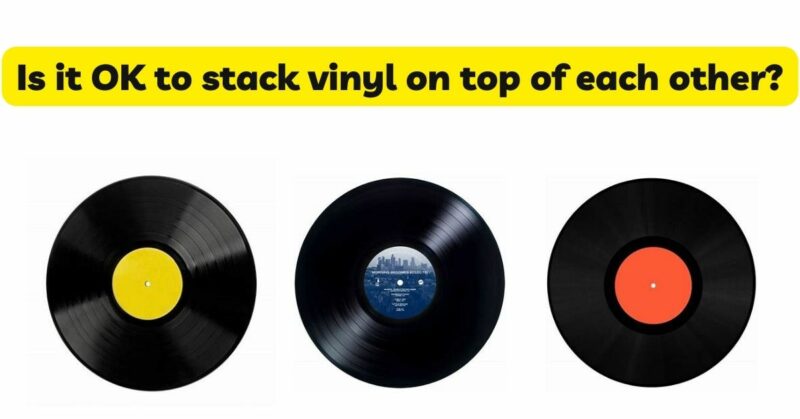When it comes to storing vinyl records, finding the right balance between accessibility, space efficiency, and preservation is crucial for collectors. Stacking vinyl records is a common practice to optimize storage, but it raises questions about the potential risks and benefits. In this article, we will explore the pros and cons of stacking vinyl records on top of each other, examining factors such as weight distribution, support, potential damage, and alternative storage options to help you make an informed decision for your vinyl collection.
The Pros of Stacking Vinyl Records:
- Space Efficiency: Stacking vinyl records is an efficient way to save space, especially for collectors with limited storage options. By vertically stacking records, you can maximize the use of shelves or storage units, allowing for a larger collection within a smaller footprint. This is particularly advantageous for collectors with growing collections or those who value space optimization.
- Easy Access and Browsing: Stacking vinyl records facilitates easy access and browsing. By organizing records in alphabetical or chronological order within the stack, you can quickly locate and retrieve specific albums without having to shift or move multiple records. This organizational benefit enhances the overall convenience and enjoyment of your vinyl collection.
- Visual Appeal: Stacking vinyl records can create an appealing visual display. With records neatly aligned and displayed side by side, the stacked arrangement can enhance the aesthetic appeal of your collection, providing a visually pleasing focal point in your music space. This can be particularly appealing for collectors who appreciate the visual charm of vinyl records.
The Cons and Potential Risks of Stacking Vinyl Records:
- Weight Distribution and Pressure: One of the primary concerns associated with stacking vinyl records is the potential for uneven weight distribution and excessive pressure on the lower records in the stack. Over time, the weight of the records above can cause the vinyl material to bend, warp, or become damaged. This can result in uneven surfaces, affecting the playback quality and potentially rendering the record unplayable.
- Groove Distortion: Stacking records vertically can also lead to groove distortion. The pressure exerted by the weight of the records above can compress the delicate grooves on the playing surface, resulting in groove distortion and compromised sound quality during playback. This distortion can be particularly noticeable on records with intricate or delicate grooves.
- Surface Damage: Stacking vinyl records without proper support or padding can result in surface damage. Records can rub against each other, leading to scratches, scuffs, or other forms of physical damage. This damage not only affects the aesthetics of the record but can also impact the playback quality, potentially introducing skips or jumps.
Alternative Storage Options:
- Vertical Storage: Vertical storage is the recommended method for storing vinyl records to ensure their long-term preservation. Utilize dedicated vinyl record storage solutions, such as shelves, crates, or storage units designed specifically for vinyl records. Vertical storage eliminates the weight and pressure associated with stacking, reducing the risk of warping, groove distortion, and surface damage.
- Record Dividers and Organizers: To maintain organization and prevent leaning or toppling of records, consider using record dividers or organizers. These dividers can be made of materials like acrylic, wood, or metal and provide additional support between records. Dividers help minimize direct contact and reduce the risk of damage during storage.
- Protective Sleeves and Inner Sleeves: Store each vinyl record in a protective inner sleeve to safeguard it from dust, scratches, and static buildup. Outer sleeves provide an extra layer of protection against environmental factors. Utilizing protective sleeves and inner sleeves helps maintain the quality and longevity of your vinyl collection, regardless of the storage method you choose.
- Regular Inspection and Rotation: Periodically inspect stacked records to identify any signs of warping, groove distortion, or surface damage. Address any issues promptly to prevent further degradation. Additionally, consider rotating the records within the stack to distribute weight more evenly and minimize prolonged pressure on specific records.
Conclusion:
Stacking vinyl records can offer space efficiency and easy access, but it is crucial to consider the potential risks and take appropriate precautions to preserve your collection’s quality. Uneven weight distribution, groove distortion, and surface damage are among the concerns associated with stacking records vertically. By following best practices such as using proper support, employing alternative storage options, utilizing protective sleeves, and conducting regular inspections, you can minimize the risks and ensure the long-term preservation of your vinyl collection. Finding the right balance between convenience and preservation is key to enjoying your vinyl records for years to come, maintaining their quality, and creating a rewarding listening experience.


